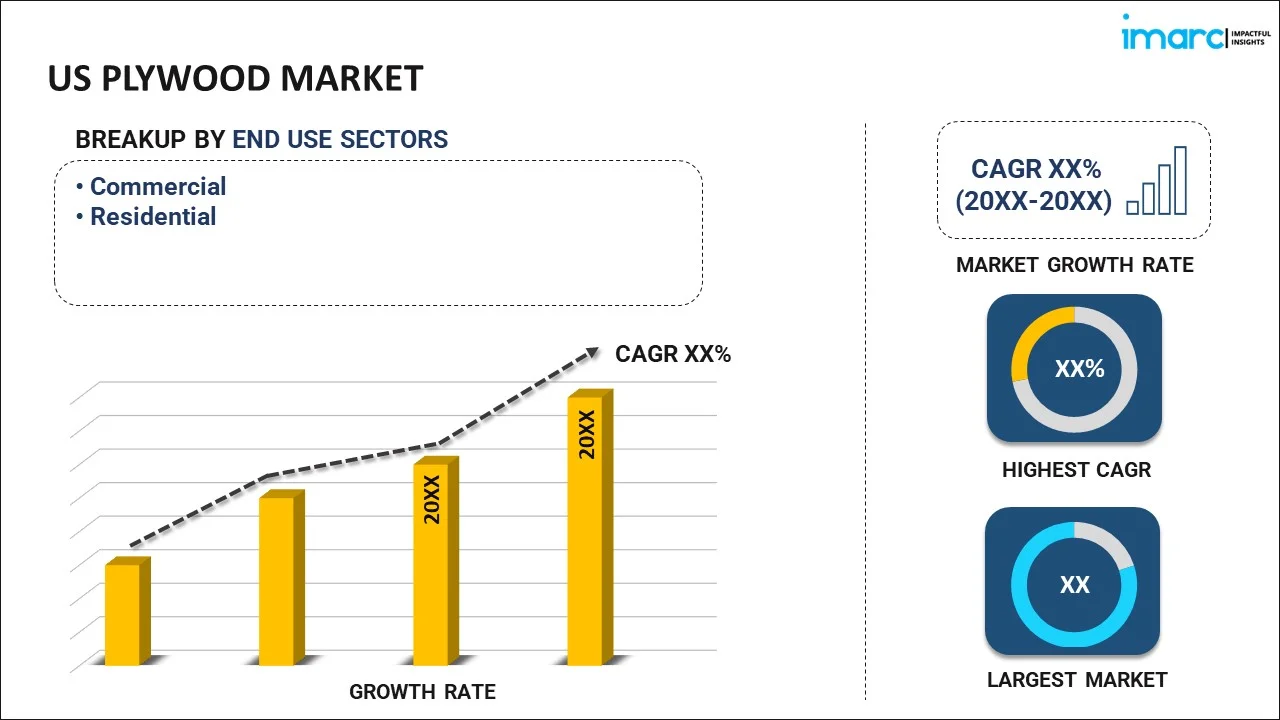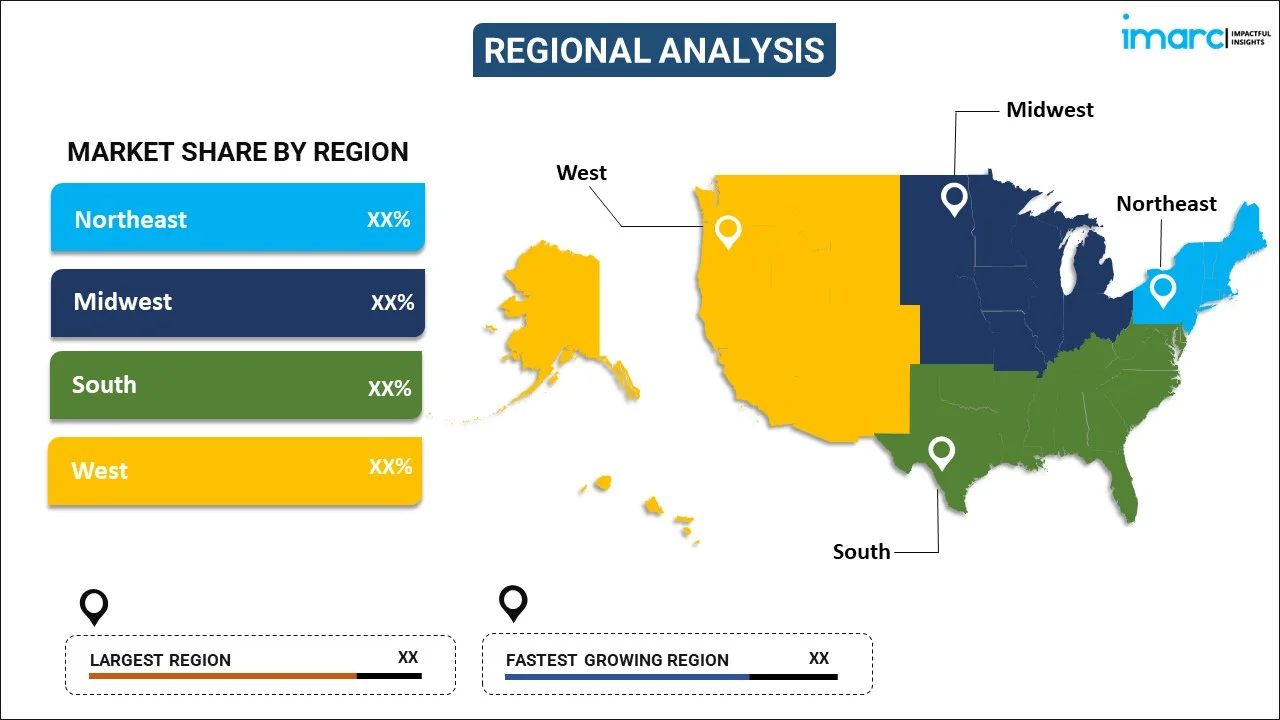
US Plywood Market Report by End Use Sector (Commercial, Residential), Application (New Construction, Replacement), Region 2025-2033
Market Overview:
The US plywood market size reached USD 23.5 Billion in 2024. Looking forward, IMARC Group expects the market to reach USD 30.8 Billion by 2033, exhibiting a growth rate (CAGR) of 2.89% during 2025-2033.
|
Report Attribute
|
Key Statistics
|
|---|---|
|
Base Year
|
2024
|
|
Forecast Years
|
2025-2033
|
|
Historical Years
|
2019-2024
|
|
Market Size in 2024
|
USD 23.5 Billion |
|
Market Forecast in 2033
|
USD 30.8 Billion |
| Market Growth Rate 2025-2033 | 2.89% |
Plywood is an engineered wood product made from three or more thin sheets of wood also known as 'plies'. These plies are glued together to form a thicker, flat sheet to form plywood. Due to the way the direction of each layer's grain is alternated in relation to adjacent layers, plywood becomes considerably stronger than some other wood-based sheet products, such as medium density fibreboard (MDF). It is also an economical, factory-produced sheet of wood with precise dimensions that does not warp or crack with changes in atmospheric moisture. These properties make plywood a versatile material with a broad range of applications from wall and floor covering to moulds for concrete structures, designer furniture to packaging.
Key Market Segmentation:
IMARC Group provides an analysis of the key trends in each sub-segment of the US plywood market report, along with forecasts at the country and regional level from 2025-2033. Our report has categorized the market based on end use sector and application.
Breakup by End Use Sector:

- Commercial
- Residential
Breakup by Application:
- New Construction
- Replacement
Breakup by Region:

- Northeast
- Midwest
- South
- West
Value Chain Analysis
Key Drivers and Challenges
Porters Five Forces Analysis
PESTEL Analysis
Government Regulations
Competitive Landscape
- Competitive Structure
- Key Player Profiles
IMARC Group’s latest report provides a deep insight into the US plywood market covering all its essential aspects. This ranges from macro overview of the market to micro details of the industry performance, recent trends, key market drivers and challenges, SWOT analysis, Porter’s five forces analysis, value chain analysis, etc. This report is a must-read for plywood manufacturers, investors, researchers, consultants, business strategists, and all those who have any kind of stake or are planning to foray into the US plywood industry in any manner.
Report Coverage:
| Report Features | Details |
|---|---|
| Base Year of the Analysis | 2024 |
| Historical Period | 2019-2024 |
| Forecast Period | 2025-2033 |
| Units | Billion USD |
| Segment Coverage | End Use Sector, Application, Region |
| Region Covered | Northeast, Midwest, South, West |
| Customization Scope | 10% Free Customization |
| Post-Sale Analyst Support | 10-12 Weeks |
| Delivery Format | PDF and Excel through Email (We can also provide the editable version of the report in PPT/Word format on special request) |
Key Questions Answered in This Report
We expect the US plywood market to exhibit a CAGR of 2.89% during 2025-2033.
The rising adoption of plywood across the construction sector, owing to its high structural strength, improved flexibility, optimal resistance against chemicals and fire, excellent insulation, excessive heating properties, etc., is primarily driving the US plywood market.
The sudden outbreak of the COVID-19 pandemic had led to the implementation of stringent lockdown regulations across the nation, resulting in the temporary halt in numerous construction activities, thereby negatively impacting the United States market for plywood.
Based on the end use sector, the US plywood market has been segregated into commercial and residential, where the residential sector currently holds the largest market share.
Based on the application, the US plywood market can be bifurcated into new construction and replacement. Currently, new construction exhibits a clear dominance in the market.
On a regional level, the market has been classified into Northeast, Midwest, South, and West, where South currently dominates the US plywood market.
Need more help?
- Speak to our experienced analysts for insights on the current market scenarios.
- Include additional segments and countries to customize the report as per your requirement.
- Gain an unparalleled competitive advantage in your domain by understanding how to utilize the report and positively impacting your operations and revenue.
- For further assistance, please connect with our analysts.
 Request Customization
Request Customization
 Speak to an Analyst
Speak to an Analyst
 Request Brochure
Request Brochure
 Inquire Before Buying
Inquire Before Buying




.webp)




.webp)












